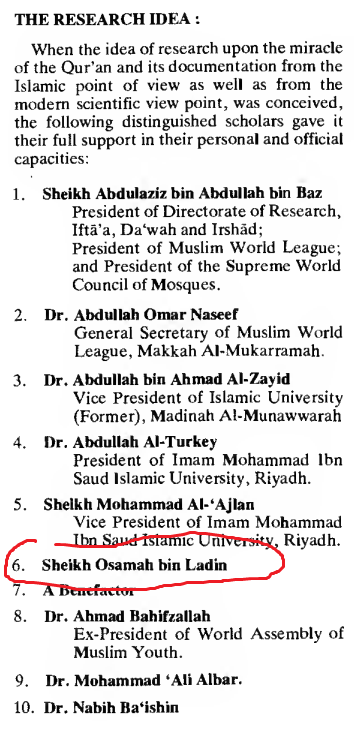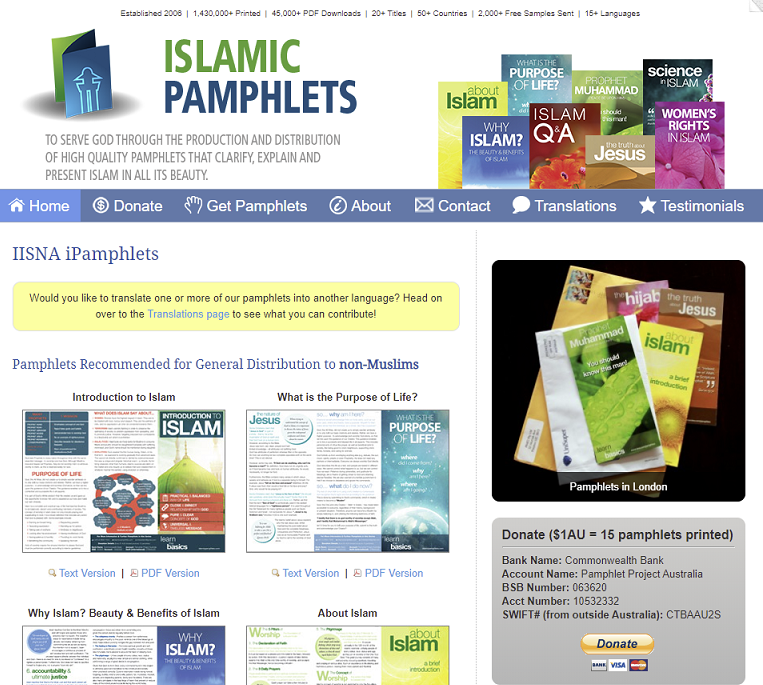There’s a verse in the Qur’an that cautions Muslims against spreading false news and urges them to check the facts first with people of “sound judgment”. It was good advice in the time of the Prophet Muhammad and it’s good advice now in the age of social media. But is there more to the verse than that? Does it actually foresee the invention of the internet?
In a recent livestream on Facebook, Dr Mabrook Atiyah, an Islamic scholar at al-Azhar in Egypt, suggested it does. “Did anyone tell you that the internet and Facebook are mentioned in the Qur’an?” he said, referring to the verse (number 83 in the Qur’an’s fourth surah). “I swear to God that the internet and Facebook are in verse 83.”
The idea that scripture can predict the future is much disputed but it nevertheless has a significant following, and not only in Islam. It’s found in Christianity, Hinduism and other religions, too. The attraction is obvious, because if ancient scripture alludes to modern inventions and scientific discoveries – things that humans couldn’t have known about at the time – it can be cited as evidence of scripture’s divine origin.
An article on “the authenticity of the Qur’an” from the Chicago-based Institute of Islamic Information and Education, says:
“Within the Qur’an are recorded facts about ancient times that were unknown to Muhammad’s contemporaries and even to historians in the first half of the 20th century. In scores of verses, we also find references to scientific wonders, some only recently discovered or confirmed, regarding the universe, biology, embryology, astronomy, physics, geography, meteorology, medicine, history, oceanography, etc.”
I once attended an open day at the Central Mosque in London where visitors were shown a film about “science” in the Qur’an and given a pamphlet to take home. It was the most interesting part of my visit and it left me – as a non-Muslim – puzzling over some surprising claims that I hadn’t heard before and wondering if they could be true.
I didn’t realise at the time, but I had just been exposed to one of Islam’s most popular recruiting tools. The idea that the Qur’an contains scientific knowledge has proved a very effective way of drawing non-Muslims towards Islam and has also given countless Muslims a renewed interest in their religion. In the words of Nidhal Guessoum, an Algerian astrophysicist, it has become “embarrassingly popular”. He writes: “It has exploded and expanded to quickly occupy large parts of the cultural landscape of the Islamic world, particularly the Arab part, over the last few decades, so much so that a whole industry of ʽscientific content’ in the Qur’an has sprung forth.”
The main inspiration for this movement was a book, ʽThe Bible, the Qur’an, and Science’, originally published in French in 1976 and still cited today. Its author – Maurice Bucaille, a French doctor who served as physician to the Saudi royal family – claimed that while the Bible contains many scientific errors, the Qur’an has remarkable foresight: references to the Big Bang, black holes and space travel can all be found in its verses, he said. As a result of that, the practice of searching the Qur’an for advance knowledge of scientific discoveries became known as “Bucailleism”.

The claims in Bucaille’s book would probably have got less attention if its author had been Muslim but the fact that it had been written by a French doctor raised as a Christian was seen as giving it extra validity. Saudis were quick to recognise its usefulness for proselytising, and hundreds of thousands of copies were printed – in seven languages – for distribution around the world (often free of charge through Muslim organisations).
Cryptic verses
The science Bucaille claimed to have detected in the Qur’an is far from explicit. It relies on ascribing specific meanings to what are often cryptic verses – and almost anyone with the inclination can join in the hunt for them. Digital versions of the text make searching easy and there’s a fair chance that somewhere among the 6,000-plus verses something can be found that could, with some stretching of the imagination, be construed as referring to a recent scientific discovery. The internet is full of examples that people claim to have found.
Ambiguities or obscurities in the language of the Qur’an are one reason why these searches tend to be fruitful. There’s more than one way to interpret the meaning of its verses and the trick is to focus on any interpretation that suggests scientific knowledge while ignoring other possibilities.
One example of how it’s done is verse 25 in surah 57 which can be translated as saying “We [i.e. God] sent down iron containing great strength and benefits for mankind.” According to the website islamreligion.com, this is in line with modern scientific knowledge: the abundant supplies of iron on Earth originated in outer space and thus were “sent down” to us as stated in the Qur’an. “It is clear that this fact could not have been known in the seventh century, when the Qur’an was revealed,” the website says. “Nevertheless, this fact is related in the Qur’an, the word of God.”
Interpretation of the verse hinges on the Arabic word “anzalna” which may mean God “sent down” iron to Earth but, more simply, can also mean God “revealed” or “provided” it. The website rejects these other meanings on the grounds that whenever “anzalna” occurs in the Qur’an it is only used in its “sending down” sense – which is incorrect. Verses elsewhere in the Qur’an state that God “sent down” clothing, food and eight kinds of cattle – and nobody has suggested any of them originated in outer space.
In orthodox Islam the Qur’an is the actual words of God, as delivered in Arabic to the Prophet Muhammad through the angel Gabriel. Needless to say, Arabic didn’t have much scientific vocabulary in the seventh century – which creates further opportunities for the Bucailleists. Arabic at the time had no specific term for “ozone layer”, so it would have to have been referred to in a figurative way that described its function – perhaps as a “shield” against the sun’s ultraviolet rays. Look in the Qur’an for mentions of a shield and – hey presto! – the Qur’an is talking about the ozone layer. A verse in the 18th surah says: “When he reached the rising of the sun, he found it rising on a people for whom We [God] had provided no shield against it.” This might suggest a place without shade but according to the True Islam website it refers to a hole in the ozone layer.

Cultivating western scientists
Following the success of Bucaille’s book, a Yemeni scholar named Abd al-Majeed al-Zindani had an idea. He was working at King Abdulaziz University in Saudi Arabia and when western scientists visited he encouraged them to say positive things about scientific “knowledge” in the Qur’an.
One of Zindani’s first targets was Keith Moore, a Canadian professor of anatomy who had been invited to lecture on embryology. While there, Moore was approached by Zindani’s assistant who wanted to discuss some Qur’anic verses that refer to development of the human embryo. The verses in question (surah 23, 12-14) include some figurative terminology in the original Arabic and have been translated as follows:
“We [God] created man from a quintessence of clay. We then placed him as a nutfah [droplet] in a place of settlement, firmly fixed, then We made the droplet into an alaqah [a leech or something that clings], then We changed the alaqah into a mudghah [a chewed substance], then We made out of that izam [bones], then We clothed the bones with lahm [flesh], then We caused him to grow and come into being and attain the definitive form.”
Moore was especially struck by the allusion to a leech. “This is an appropriate description of the human embryo from days 7-24 when it clings to the endometrium of the uterus, in the same way that a leech clings to the skin,” he wrote later in an article for the Journal of the Islamic Medical Association of North America. “Just as the leech derives blood from the host, the human embryo derives blood from the decidua or pregnant endometrium. It is remarkable how much the embryo of 23-24 days resembles a leech. As there were no microscopes or lenses available in the seventh century, doctors would not have known that the human embryo had this leech-like appearance. In the early part of the fourth week, the embryo is just visible to the unaided eye because it is smaller than a kernel of wheat.”
Moore then worked through the sequence described in the Qur’an, linking each step to a known stage in the development of a human embryo. “The interpretation of the verses in the Qur’an referring to human development would not have been possible in the seventh century AD, or even a hundred years ago,” he wrote. “We can interpret them now because the science of modern embryology affords us new understanding.”
He did note, however, that Aristotle had already described stages in the development of bird embryos in the fourth century BC and the physician/philosopher Galen had described the placenta and fetal membranes in the second century AD. Later, an American professor who had been drawn into Zindani’s circle proposed commissioning independent research to check for possible earlier sources of Qur’an’s embryo description but his idea was rejected.
Moore, the son of a Protestant clergyman, was the author of “The Developing Human”, a respected textbook on embryology, and in 1983 he produced a new version with “Islamic additions” written by Zindani. The new version also had an acknowledgements section thanking ten “distinguished scholars” (almost all of them Saudis) who had given “personal and official” support to the book project. The list was headed by Abd al-Aziz bin Baz – later to become the kingdom’s Grand Mufti – who at the time maintained that the sun revolves around the Earth. Sixth on the list was Sheikh Osama bin Laden.

Video interviews
In 1984 Zindani obtained Saudi funding for a “Commission on Scientific Signs in the Qur’an and Sunnah” which then set about cultivating scientists in North America. Zindani’s commission invited them to conferences, offering first-class plane tickets, rooms at the best hotels, $1,000 honorariums, and banquets with Muslim leaders such as Pakistani President Mohammed Zia ul-Haq.
During the course of their trips, Zindani presented the scientists with verses from the Qur’an relating to their area of expertise. He then interviewed them about the verses in front of a video camera, pushing them to acknowledge signs of divine inspiration.
One of those caught up in this was William Hay at the University of Colorado. As a marine scientist, Hay was presented with a verse that spoke of “the darkness in a deep sea ... covered by waves, above which are waves”. On camera, Zindani pressed him to say that the verse referred to internal waves caused by varying densities in ocean depths – something the Prophet could not have known about. Hay, a Methodist Christian, prevaricated but Zindani rejected all his alternative suggestions until he eventually conceded that the Qur’an’s information about internal waves must have come from “the divine being”.
Videos of the scientists who fell into this trap were widely circulated on Islamic websites. Years later, some of them can still be seen today and Moore, in particular, is still quoted in articles about the Qur’an’s exposition of embryology.
Meanwhile, Zindani returned to his Yemeni homeland and became a prominent figure in the conservative/Islamist party, Islah. In the early 1990s he founded the Iman (“Faith”) University in Yemen, a religious institution which at one point was said to have 6,000 students, including several hundred foreigners. Its most prominent alumnus was John Walker Lindh, a convert to Islam who became known as the “American Taliban”.
Zindani had long-standing ties with Osama bin Laden, who he is said to have advised on theological matters. In 2004 he was sanctioned by the UN and US for supporting terrorism (partly because of his relationship with bin Laden) and his university was later shut down when Houthi fighters, who had religious and political differences with Zindani, seized control of the Yemeni capital, Sana’a.
'Islamically verified'
Although the idea that “miraculous” scientific knowledge can be found in the Qur’an has a popular following, its spurious claims have also driven many Muslims away from Islam according to Hamza Tzortzis, a convert who once dallied with Bucailleism but now describes it as “an intellectual embarrassment”.
Its widespread use as a tool for proselytising is especially alarming because non-Muslims, unaware of the background, can easily be misled into thinking it is mainstream Islamic teaching. One example can be found at islamicpamphlets.com, an Australian-based website offering a selection of pamphlets “recommended for general distribution to non-Muslims”. The website provides artwork that can be downloaded by Muslim proselytisers and printed locally to save on transportation costs. There are also online templates that can be used to translate the English text into other languages and, according to the website, versions in 30 languages are available so far.
Its pamphlet on “Science in Islam” follows the usual Bucailleist line, citing the development of the embryo, the ozone layer, the “sending down” of iron and internal waves in the sea as evidence of the Qur’an’s divine origin. The website assures readers that these claims have been “Islamically verified by a reputable shaykh” (who is not named). There's nothing to indicate that they are disputed by other Muslims or that they are based on a particular way of interpreting the Qur’an, as favoured by the likes of Bin Laden and Zindani.


 RSS Feed
RSS Feed
